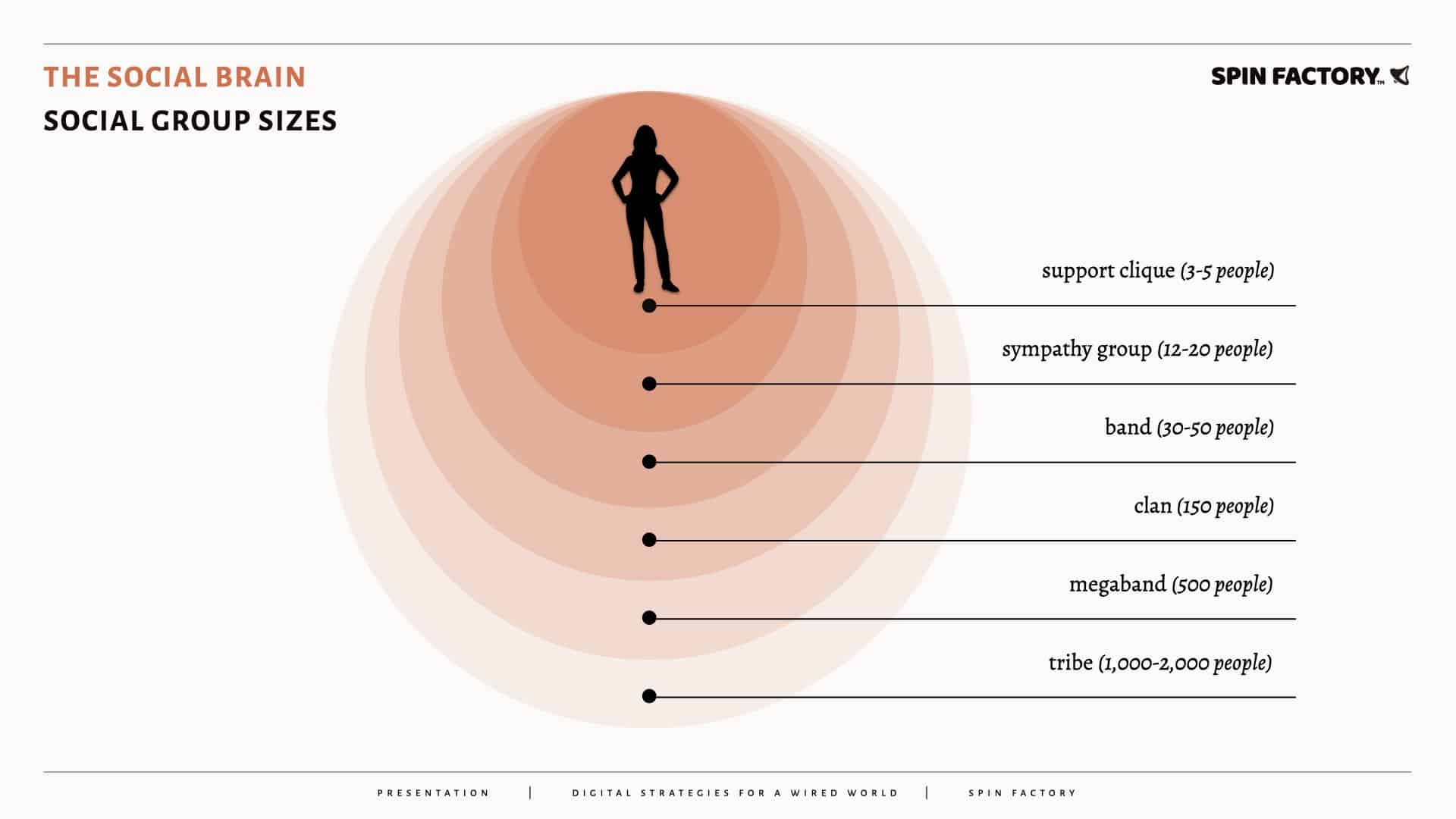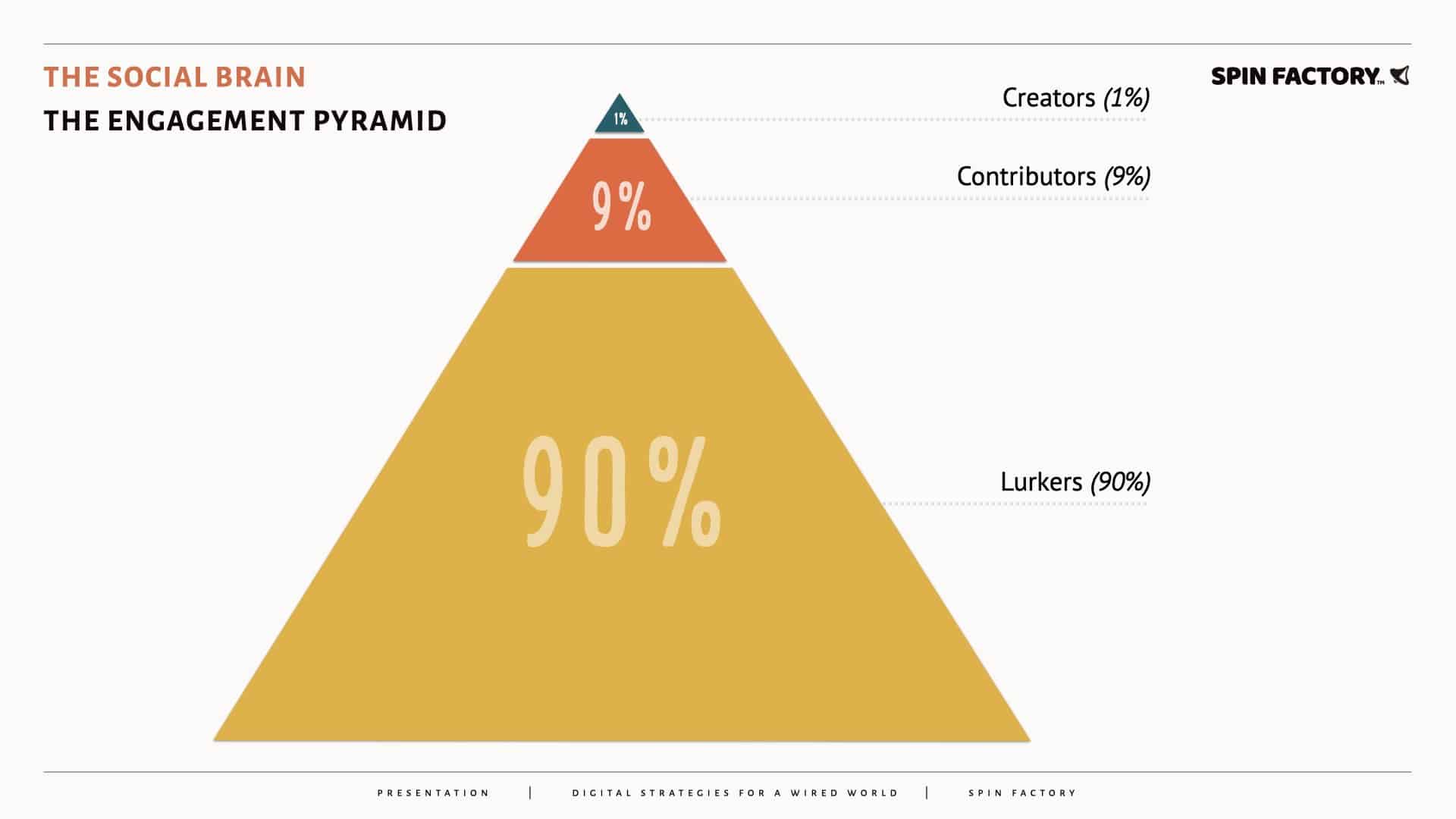We tend to organise ourselves in stable group sizes.
What used to be dictated by physical proximity is now completely rid of any such restrictions.
The internet allows us to find many different types of tribes and many different types of people to “include” in our groups.
Today, we live in a wired world where you can maintain meaningful relationships with individuals without geographical connections. But how large can such groups be?
Here we go:
Social Group Sizes (For Social Brains)
How many social connections you you comfortably sustain? According to the social brain hypothesis, limits exist. 1Zhou WX, Sornette D, Hill RA, Dunbar RI. Discrete hierarchical organization of social group sizes. Proc Biol Sci. 2005 Feb 22;272(1561):439 – 44.
“The ‘social brain hypothesis’ for the evolution of large brains in primates has led to evidence for the coevolution of neocortical size and social group sizes, suggesting that there is a cognitive constraint on group size that depends, in some way, on the volume of neural material available for processing and synthesizing information on social relationships.”
Source: Proceedings of the Royal Society B: Biological Sciences 2Zhou, X., Sornette, D., Hill, R. A., & M. Dunbar, R. I. (2005). Discrete hierarchical organization of social group sizes. Proceedings of the Royal Society B: Biological Sciences, 272(1561), … Continue reading
Scientific evidence suggests that people tend to organise themselves not in an even distribution of group sizes but in discrete hierarchical social groups of more particular sizes:
Alas, there seems to be a discrete statistical order in the complex chaos of human relationships:
“Such discrete scale invariance could be related to that identified in signatures of herding behaviour in financial markets and might reflect a hierarchical processing of social nearness by human brains.“
Source: Proceedings of the Royal Society B: Biological Sciences 3Zhou, X., Sornette, D., Hill, R. A., & M. Dunbar, R. I. (2005). Discrete hierarchical organization of social group sizes. Proceedings of the Royal Society B: Biological Sciences, 272(1561), … Continue reading
Read also: Group Sizes (The Social Brain Hypothesis)
150 — Dunbar’s Number
Robin Dunbar, a British anthropologist and evolutionary psychologist, proposed what’s known as “Dunbar’s Number” — a theory suggesting that humans can only comfortably maintain about 150 stable relationships. 4Dunbar, R. I. M. (1998). The social brain hypothesis. Evolutionary Anthropology: Issues, News, and Reviews, 6(5), 178 – 190.
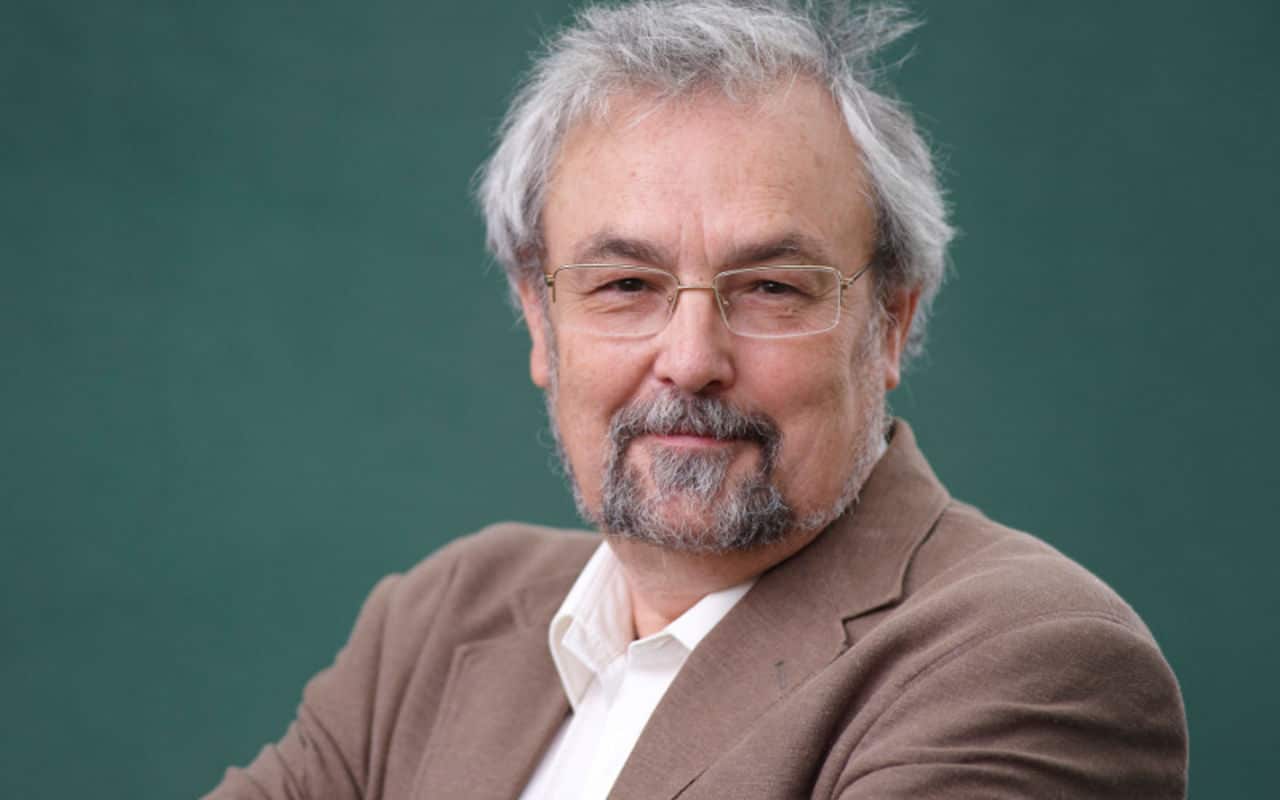
This includes family, friends, colleagues, and others with whom a person can keep meaningful contact. Beyond this number, the quality of relationships can diminish due to the limitations in our mental bandwidth. 5Silfwer, J. (2012, April 14). Social Group Sizes (The Social Brain Hypothesis). Doctor Spin | the PR Blog. https://doctorspin.net/group-sizes/
“Dunbar’s number is a suggested cognitive limit to the number of people with whom one can maintain stable social relationships. […] No precise value has been proposed for Dunbar’s number. It has been proposed to lie between 100 and 230, with a commonly used value of 150. Dunbar’s number states the number of people one knows and keeps social contact with, and it does not include the number of people known personally with a ceased social relationship, nor people just generally known with a lack of persistent social relationship, a number which might be much higher and likely depends on long-term memory size.”
Source: Wikipedia 6Dunbar’s number. (2023, May 29). In Wikipedia. https://en.wikipedia.org/wiki/Dunbar%27s_number
According to Dunbar, this limit is a direct function of relative neocortex size, which constrains our ability to keep track of complex social relationships. 7It’s worth noting that the concept of Dunbar’s Number has been debated and scrutinised within the scientific community.
Learn more: 150 — Dunbar’s Number
Online Identities and Interest Groups
I would say I do know 150 people that I’ve spent time with over the years.
But I also know 150 colleagues that I’ve had. I also know 150 people from the public relations industry, for sure. And I know at least 150 social media naturals, and so on.
How does group formation scale in social media?
Examine this model by Viil Lid, PhD candidate in Communication & Information Sciences at the University of Hawaii:
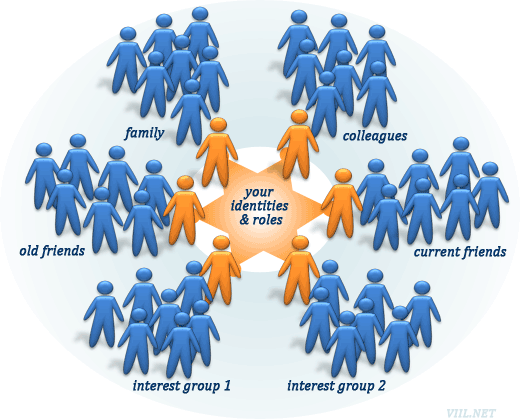
When I’m asked what makes the “social media revolution” so special, I always say that never before in human history have we seen human groups forming at such speeds, almost independent of demographic factors.
It amplifies Dunbar’s number at the interest group level — not due to any sudden increase in our capability to sustain more than 150 relationships.
Group Sizes of Sustainable Relationships
The effects of digital spread are likened to viral infections because boundary spanners and individual nodes have relationships in several different types of interest networks.
For each of these networks, Liid once again shows us a model that I’ve been using in several of the seminars I’ve given:
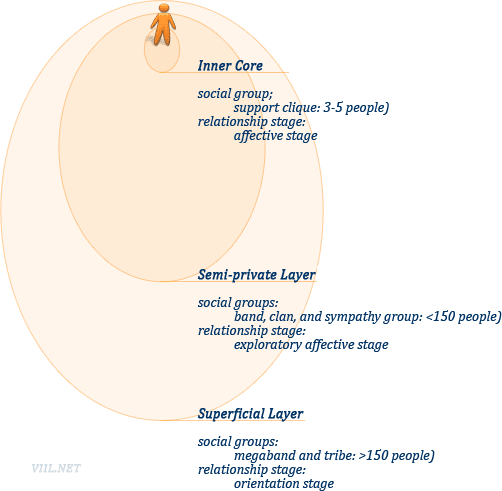
How many “Dunbar, number interest tribes” can a single individual maintain? If we dig deeper into this question, we must also determine the strength of the individual bindings. Interestingly enough, we see Dunbar’s number in action once again:
Building trust is a journey from the periphery to the centre. You start any relationship with an individual or a brand by being a stranger.
PR professionals should explore the digital space, not for clicks, memes, or virals but to build and maintain relationships using online social psychology. Social media doesn’t scale linearly, but tapping into different and pre-existing interest groups does.
The Engagement Pyramid
The 1% rule of online engagement was mainly an urban legend on the internet. However, a peer-reviewed paper from 2014 confirmed the 1% rule of thumb. 8Trevor van Mierlo. (2014). The 1% Rule in Four Digital Health Social Networks: An Observational Study. Journal of Medical Internet Research, 16(2), e33 – e33. … Continue reading
Active publics distribute themselves in a way proven scientifically by sociologists — long before the internet and social media emerged.
The engagement pyramid divides publics into three distinct groups:
When studying internet forums specifically, it’s not uncommon to find that 90% of users have never posted (lurkers), 9% are adding only to existing topics and threads (contributors), and 1% are actively starting new subjects and threads (creators).
The engagement pyramid is sometimes called the 1% rule or the 90−9−1 principle.
“The 90−9−1 principle and Zipf’s Law both effectively classify members in online support groups, with the Zipf distribution accounting for 98.6% of the variance.”
Source: Internet Interventions 9Carron-Arthur, B., Cunningham, J., & Griffiths, K. (2014). Describing the distribution of engagement in an Internet support group by post frequency: A comparison of the 90−9−1 Principle and … Continue reading
Learn more: The Engagement Pyramid (The 90−9−1 Principle)

THANKS FOR READING.
Need PR help? Hire me here.

What should you study next?
Spin Academy | Online PR Courses

Spin’s PR School: Free Psychology PR Course
Join this free Psychology PR Course to learn essential skills tailored for public relations professionals. Start now and amplify your impact on society today.
Psychology in Public Relations
Group Psychology
Learn more: All Free PR Courses
💡 Subscribe and get a free ebook on how to get better PR.

Annotations
| 1 | Zhou WX, Sornette D, Hill RA, Dunbar RI. Discrete hierarchical organization of social group sizes. Proc Biol Sci. 2005 Feb 22;272(1561):439 – 44. |
|---|---|
| 2, 3 | Zhou, X., Sornette, D., Hill, R. A., & M. Dunbar, R. I. (2005). Discrete hierarchical organization of social group sizes. Proceedings of the Royal Society B: Biological Sciences, 272(1561), 439 – 444. https://doi.org/10.1098/rspb.2004.2970 |
| 4 | Dunbar, R. I. M. (1998). The social brain hypothesis. Evolutionary Anthropology: Issues, News, and Reviews, 6(5), 178 – 190. |
| 5 | Silfwer, J. (2012, April 14). Social Group Sizes (The Social Brain Hypothesis). Doctor Spin | the PR Blog. https://doctorspin.net/group-sizes/ |
| 6 | Dunbar’s number. (2023, May 29). In Wikipedia. https://en.wikipedia.org/wiki/Dunbar%27s_number |
| 7 | It’s worth noting that the concept of Dunbar’s Number has been debated and scrutinised within the scientific community. |
| 8 | Trevor van Mierlo. (2014). The 1% Rule in Four Digital Health Social Networks: An Observational Study. Journal of Medical Internet Research, 16(2), e33 – e33. https://doi.org/10.2196/jmir.2966 |
| 9 | Carron-Arthur, B., Cunningham, J., & Griffiths, K. (2014). Describing the distribution of engagement in an Internet support group by post frequency: A comparison of the 90−9−1 Principle and Zipf’s Law. Internet Interventions, 1, 165 – 168. https://doi.org/10.1016/J.INVENT.2014.09.003 |

